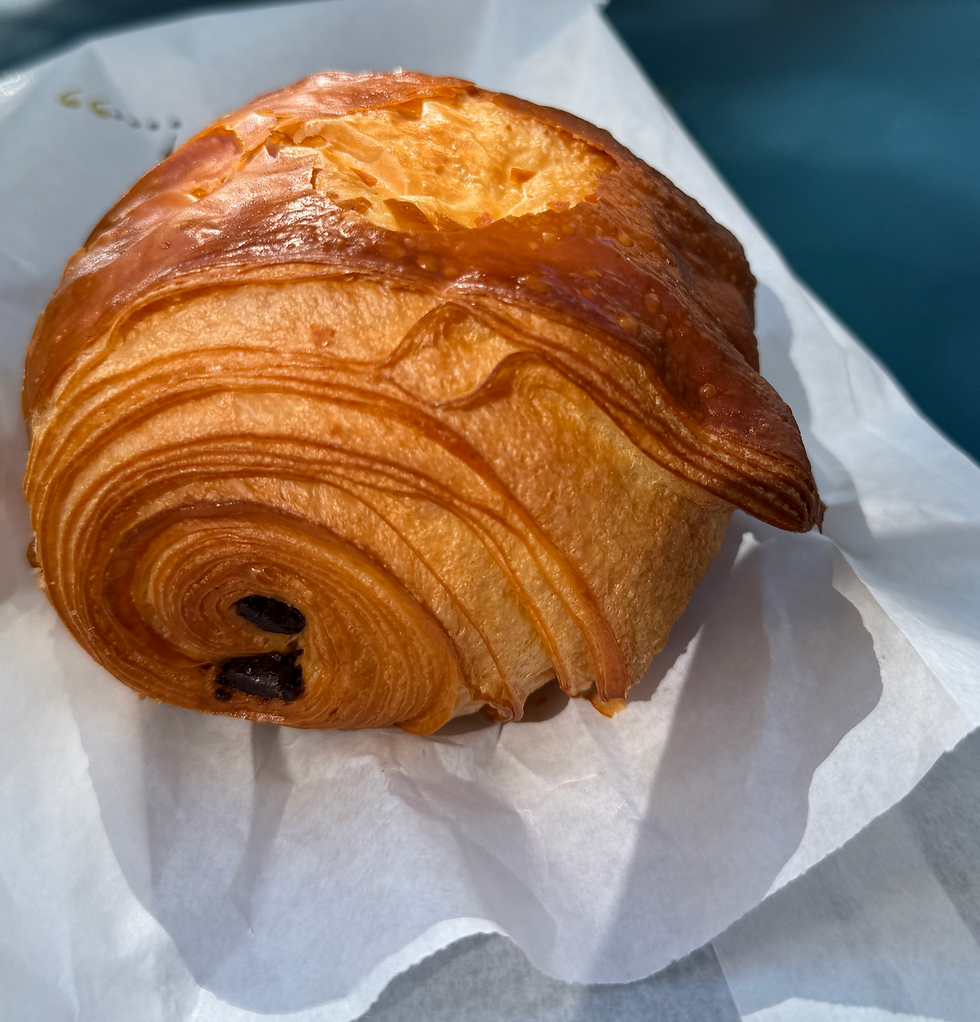St. Beatus and the Dragon
- Deborah Kade
- Sep 3, 2019
- 3 min read
September 3, 2019
After breakfast, I walked to the train station to retrieve my luggage that I had checked in when I arrived in Zürich. It is wonderful not having to schlep my bags from the airport to Unterseen when I have to change trains plus have a short connection.
Then, I took baby Hannah for a walk. I love it when she smiles for me.
This afternoon, I took the bus to get to the St. Beatus Höhlen Swiss caves.
According to the fable, St. Beatus fought off a dragon so Beatus could carve out an existence as a hermit in the caves during the 6th century.

"A long time ago, the Beatus caves were home to a vicious dragon. At least this is the belief in popular folklore. For obvious reasons, the villagers were terrified of the monster. However, no one dared to venture close to the caves. At least not until the arrival of St. Beatus, an Irish monk who came to Switzerland in order to spread Christianity. As he sailed along Lake Thun, St. Beatus often spotted the black hole from his boat. He wondered what the opening led to.
After interacting with the villagers, he heard tales of the dragon and realized the hole was actually the doorway to the dragon’s home. The villagers begged him to do something about the dragon menace, so St. Beatus bravely set off to the mountain.
Legend has it that St. Beatus was not deterred by the size of the fire-spitting dragon. He cast a spell on the beast which then tumbled into Lake Thun and drown in the boiling waters of the lake.
The villagers rejoiced at the victory and St. Beatus became a hero. Christianity spread in Switzerland, and the beast never showed up again."
My guide said the bones of the dragon have not be found so the dragon may still be alive and living in the lake.
The St. Beatus caves are a natural source of spiritual energy.
Well, before taking the tour, I had to walk the zigzagging walkways up to the cave. I was so happy the pathways weren't stairs. Luckily, I didn't take the boat as I would have had a longer climb up.







Halfway up, I turned around and took a picture of the Niesen.

At the beginning of the cave, you hear the roaring sound of water rushing toward the opening of the cave. The further you walk into the cave the sound changes to plinking sounds (both fast and slow) of dripping water. There are sections where it is absolutely silent.
I was just in time to catch the guided tour. We followed a well lit path for a distance of 1 kilometer which is .6214 of a mile. It seemed longer to me with climbing all those steps!!!! We experienced water as an element in its solid and liquid form. The altitude changed by 86 meters along the path. The average temperature is from 8-10 degrees C.
Our guide says she is from Bern where they walk slowly. She thought she walked quickly.
This is a sinter pool called Milton Grotto. Sinter is a stalactite mass or rock, which is caused by the gradual depositing of mineral limestone (sintering). Limestone is a chemical compound compromised of calcium, carbon and oxygen with the chemical formula CaCO3





Creek Grotto


Three Sisters Grotto
You see the small lake mirroring the stalactites, which gives the effect of a grotto beneath the grotto.
Stalagmites grow from the bottom up
Stalactites grow from the top to bottom















The "cauliflower" does not consist of ground sinter but of agaric minerals. Most agaric minerals are whitish or grayish and have a creamy consistency.





The next pictures were taken in Dome Grotto. The name comes from the semicircular roof reminiscent of a cathedral dome. This is also a sign that the cave was formed below the water level. The highest point of this Grotto is 11 meters.

How good is your imagination? Can you see the dragon in the middle of the picture?


The guide pointed out St. Beatus and his staff. I think the staff resembles the head of a brontosaurus dinosaur. St. Beatus is hunched over to the left of the staff.

The spores of algae, mosses and ferns were introduced in the cave naturally. The direct lighting from the lamps is sufficient for the plants to turn green and grow.


The next six pictures are of a stalactite wall which consists of sinter. Under the stalactite wall is the main stream which disappears into the Creek Grotto. This corridor is new, narrow and still growing.









Mirror Grotto




Silex nodules were formed when the lime mud turned to stone about 100,000,000 years ago. These are flint. the clay deposits at the top of the wall are under water, but formed close to the surface of the water.



Another wonderful day comes to a close.
Tonight, this was the view of the Mönch and Jungrau as seen from my bedroom.






Comments